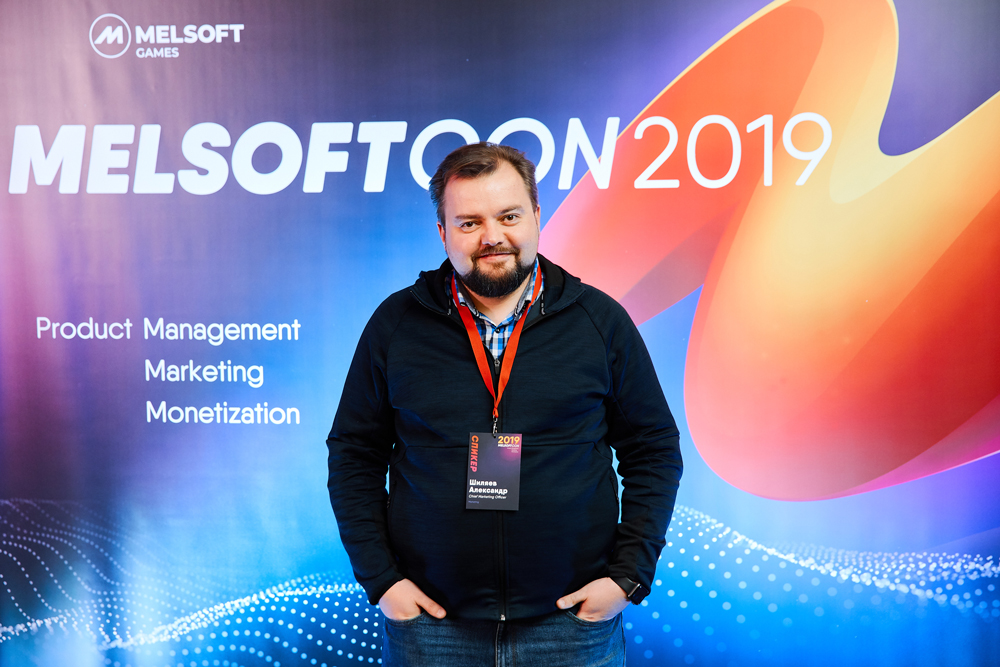We continue to summarize the results of 2019 together with the heads of gaming companies and market experts. Next up is an interview with Alexander Shilyaev, COO/CMO at Melsoft Games. He told about what the company managed to do in a year.
How was 2019 for the company?
The year began with the fact that the Easy Team joined us, which was developing a farm in the setting of the Stone Age Family Age. Almost all year we have been preparing this product for release:
- changed the name and corporate identity a little (now the product is called Family Island);
- connected the marketing analytics stack;
- rewrote the server;
- recalculated the balance;
- drew new characters;
- community platforms were being prepared;
- experimented with creatives for purchases;
- translated the narrative into other languages;
- they hired new people and rebuilt the processes.
In general, we transferred our experience gained while operating My Cafe to a new product. On November 19, we launched Family Island into global operation. The launch went even better than the launch of My Cafe three and a half years ago, contrary to the opinion that platform support is getting worse every year.

A landmark for the company is the fact that now Melsoft Games is a company of two rather large games in operation. Because of this, we needed to adapt the processes and technology stack for this year. Now we can now work, conditionally, with N-products.
The transition from a single—product company to a multi-product company is, I would say, a phase transition. It is important to do this correctly in order to avoid a situation where a more successful product pulls over all the resources in the company without an alternative.
We also systematically worked on our main title My Cafe. The product is in its fourth year on the market and continues to grow. Next year, the game will receive significant updates.
We have grown significantly in terms of people (almost one and a half times), strengthened marketing teams and teams of future products that we will soft-launch in 2020.
What events in the regional and global gaming industry do you consider central in the past year?
I will highlight several such events.
It is obvious that platform companies are trying to reformat the industry in the way they understand it. In the fall, Apple Arcade and Google Play Pass services were launched, which transfer the business model of music subscription to games. On November 19, the Google Stadia service was launched.
These things look like long-term projects, but so far no official statistics have been released, it is difficult to assess the effectiveness of these services and their impact on the industry. It is unclear how quickly these services will be able to influence consumer preferences.
It was nice to see the changes in iOS 13 related to the work of subscriptions. This gives hope that the “easy” money from scammers will not be so “easy”.
At our regional level, we can note the beginning of consolidation — announcements of transactions of large companies with medium-sized ones. The strong become stronger, combine expertise, raise the threshold for entering the market.
What are the main trends in the market today?
We are engaged in mobile games, so the trends are about them.
Firstly, hyper-casual seems to have turned into a genre. Last year, his rebirth was more like a flash. Surprisingly, its growth has continued this year. Obviously, the competition has increased, the requirements for the quality of products have increased, but the main thing is that the genre has finally formed. Including from the point of view of consumer preferences, target audience and methods of promotion. We don’t work in this genre, but it’s fun to watch it from the sidelines, as well as communicate with colleagues and platforms about where it’s all going.
Secondly (just where it all goes), casual genres are gradually becoming more complicated: meta begins to appear in hyper-casual and conditional “coloring books”, in casual — midcore mechanics and monetization (events, clans, seasonal passes).
It can also be noted that there are more and more “old” games in the tops that were released 4-7 years ago. If earlier developers had a focus on new products, now for many it has changed to support and development of old ones: sometimes it is easier to add another game to an existing product, where there is already an audience, proven promotion and work with the community, than to make a new product. For established companies, this is now a very frequent case, which also complicates the entry of new products into the market.
Which third-party game releases this year, in your opinion, were the most important? Plus, which games did you spend the most time on in 2019 as a gamer?
The most interesting thing, probably, was the restart of Fortnite — a good example of how to do global rebalances correctly without raking haight.
In the mobile market, the releases of Call of Duty (this is my favorite PC shooter franchise, it also set a new quality bar for mobile shooters) and Archero (a great example of how to diversify the mobile experience) were notable for me.
I also try to view all significant casual releases, to see how competitors and the market are developing. This year I spent a lot of time on match-3 (including the expected release of Wildscapes), I understood idle games (Idle Capitalist, Idle Miner, Idle Gym, the latter was especially delayed).
But in terms of time, I pay most attention to our own games and prototypes. I play as a free and paid player, I describe to the teams my feelings about the game.

